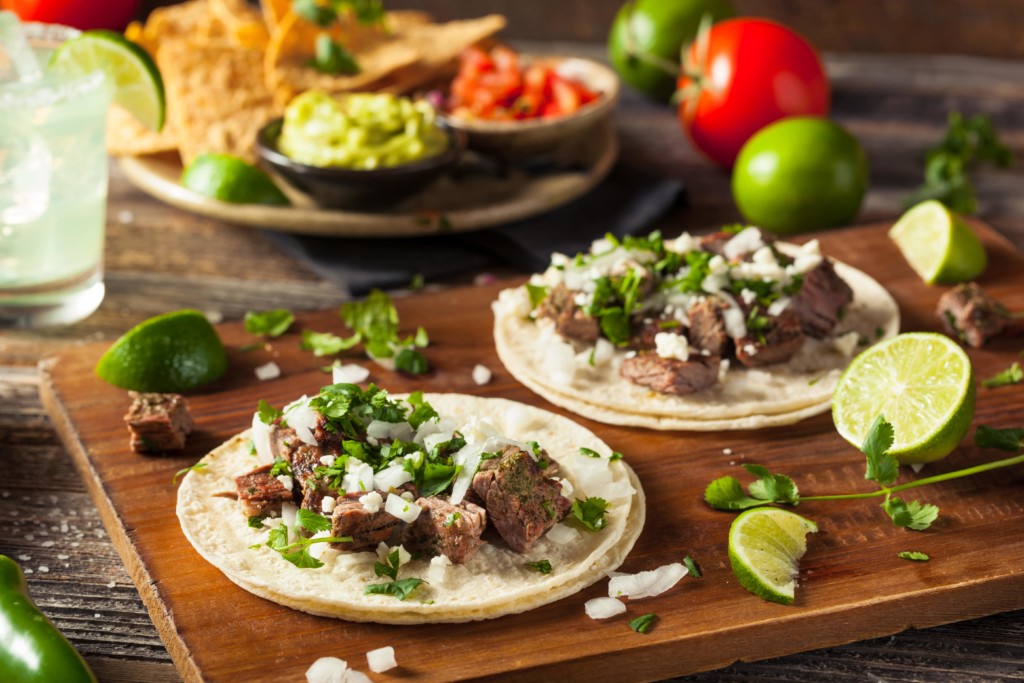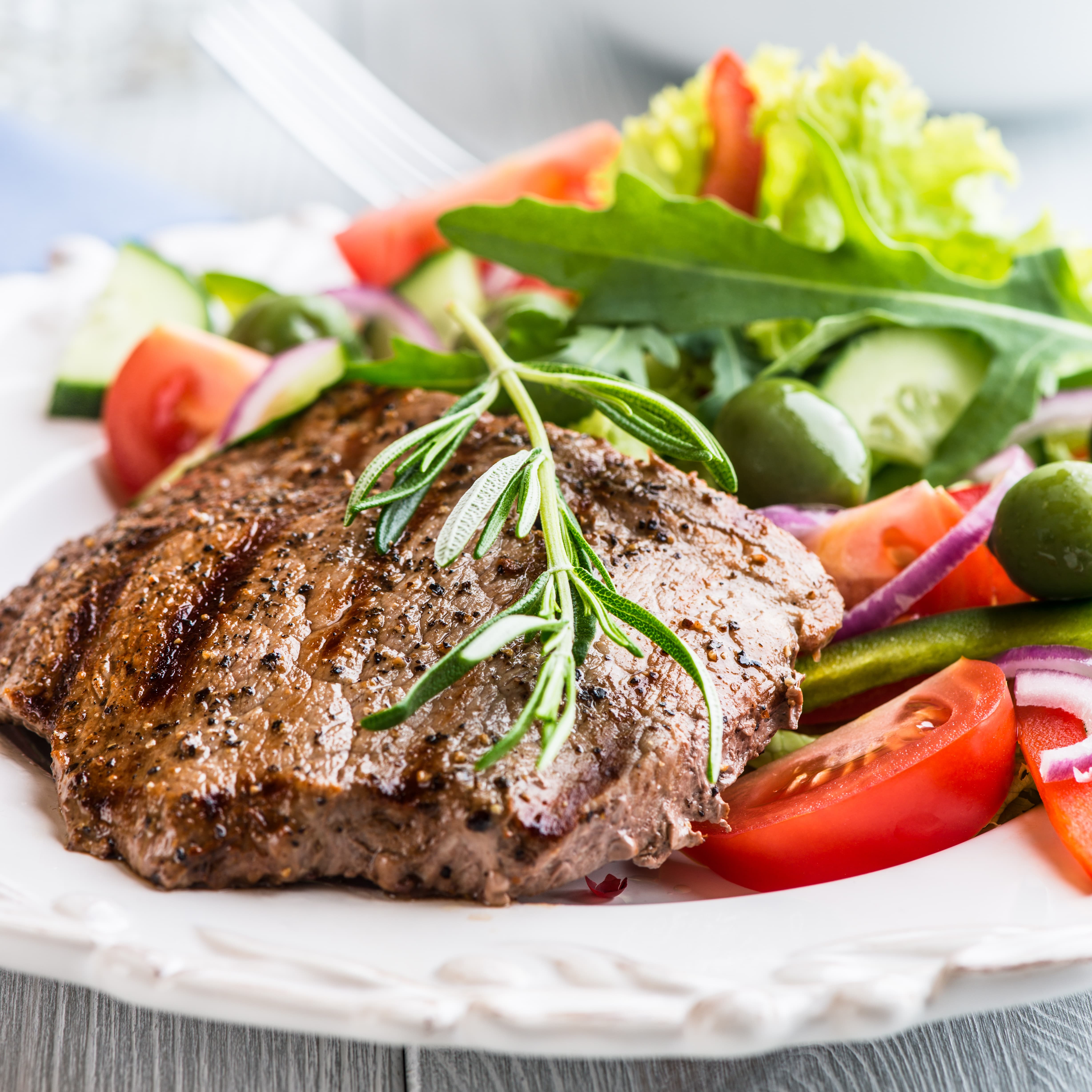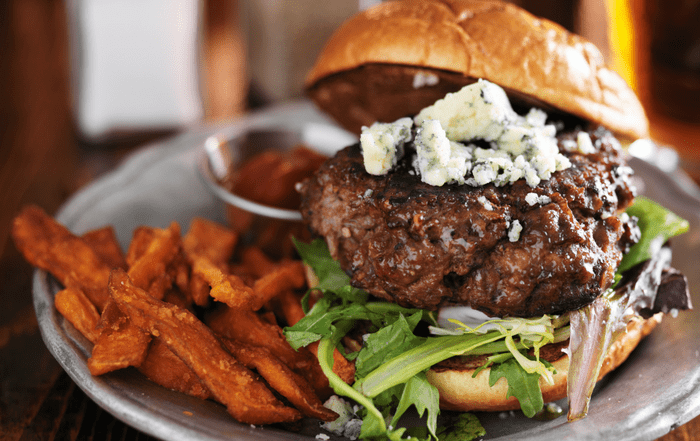In the Strong Girl Nutrition Guide, I break down the benefits of eating protein, especially lean red meat. While I’m not a big steak person and don’t eat red meat every day, there are certainly days I want to scarf down a big juicy burger or a carne asada! Anyone with me? Some people completely shy away from red meat, but eating red meat once or twice a week (with veggies + good carbs!) or every once in while contributes to a well-rounded diet. Beef is an excellent source of protein and contains nutrients like iron, B vitamins, phosphorus and zinc – all of which build a healthy immune system, heal wounds more quickly, increase muscle mass (hello Strong Body!), and strengthen bones and teeth, for starters. But before you dive into that burger or piece of steak, ask yourself if you know about where it came from. The way a cow is fed has a big impact on how nutritious the meat actually is!

Grass-fed vs. Grain-fed beef
You’ve probably heard a lot of talk about grass-fed vs. grain-fed beef, but does it actually matter which kind you eat? First, it’s important to know the difference between the two. According to Jo Johnson, author of “The Health Benefits of Grass Farming”, the difference between grain-fed and grass-fed animals is dramatic. Grass-fed cows graze on pastures and consume fresh grass and forage, while grain-fed animals live on a feedlot where they are fed a mixture of corn, soy, grains, and other supplements combined with hormones and antibiotics. Like grass-fed cows, grain-fed cows spend the first six months to a year of their lives eating grass on a pasture, but then they are transferred to feedlots unlike grass-fed cows that call the pastures home their whole lives.
Grain-fed cows are considered a good profit by the U.S. beef industry because they gain weight and grow faster than cows that only feed on grass, forage and hay; on many occasions they reach slaughter weight up to a year faster than grass-fed cows, which is why grain-fed meat is cheaper due to quicker mass production. Grass-fed beef tends to be more expensive at the market and can often be identified by its darker color with less fat marbling than is seen on grain-fed beef cuts.
When you’re shopping for beef at the market next time, be sure to check the label first. Unfortunately, because the “grass-fed” label is not regulated by the USDA, some brands still label their meat “grass-fed” because the animal was on a pasture for the first six months before switching to a grain diet on a feeding lot. Your local whole foods, health store or butcher should have a good selection of organic, grass-fed meat. When in doubt, ask your waiter at a restaurant or butcher when you’re buying your meat what type of meat it is and its origins. And, if you still don’t get an answer you’re looking for, you can always look up the brand online!

What are the benefits of eating grass-fed beef?
Choosing to eat grass-fed beef over grain-fed is loaded with health benefits, among them weight loss and increased nutrient and vitamin levels. I’ve outlined 3 important benefits below!
- Lower in fat. Grass-fed animals have less fat than grain-fed animals that are fed a combination of grains and hormones that are intended to fatten them up quickly. Because grass-fed meat is leaner, it also has fewer calories and can lower LDL cholesterol levels (aka the bad cholesterol).
- Higher omega-3 levels. Omega-3 fatty acids play an important role in our bodies. They are essential for proper cell function, regulate genetic function, help prevent heart disease and stroke, and may help prevent cancer and other conditioners. Grass-fed cows have higher fatty acid levels because Omega-3s are formed in the chloroplasts found in the plants they consume on a daily basis, opposed to grain-fed animals whose levels of fatty acids decrease daily as a result of their diet on the feedlot. Grass-fed animals also have more vitamin E, vitamin B and beta-carotene thanks to their healthier diet.
- Lower risk of toxins. As a result of the hormones, antibiotics and drugs that grain-fed animals are given to promote faster growth, these are then passed onto us when we consume their meat! These hormones may potentially cause cancer and other defects or health problems. Also, grass-fed beef is less likely to contain E. coli bacteria than grain-fed meat, so you have less chances of getting sick from eating it. The conditions that grain-fed animals live in tend to be dirtier and more crowded, leading to them consuming more hazardous waste products, as well.
Another reason why meat-eaters may choose to eat grass-fed over grain-fed is for humane reasons of how the cows are raised and for a more positive environmental impact from producing the livestock. At the end of the day, you’re going to be okay eating grain-fed meat every once in a while or if there is no other option, on occasion. However, personally, I would recommend you make it a conscious decision to seek out the grass-fed meat when you buy it or have the option. Let me know your thoughts and opinions below! xo





Thanks for the information about the lower risk of toxins on grass-fed beef, because they don’t have the hormones, antibiotics, and drugs to promote growth. It’s helpful to know that these toxins are passed on from the meat to the consumer, and can potentially cause cancer and other health issues. It’s good you also mentioned that grass-fed beef is less likely to contain E.coli bacteria so there’s less chance of getting sick from eating it. I’ll share this post with my friends who are promoting healthy eating habits, like me. Thanks for the advice!
I wasn’t feeling well this week, worse than in a while. I’ve had chronic respiratory issues/bronchitis/allergies along with Hashimoto – feeling weak, anxious, a feverish feeling and sometimes labored breathing. I deiced to make grassfed beef a regular part of my diet – increasing my beef consumption overall. I had an 8oz. steak two days in a row and note a remarkable difference in energy, slept better and woke up feeling energized more than I’ve felt in a while, even emotionally. I’ve decided to work on incorporating either meat or homemade bone broth daily and see if the positive impact continues.